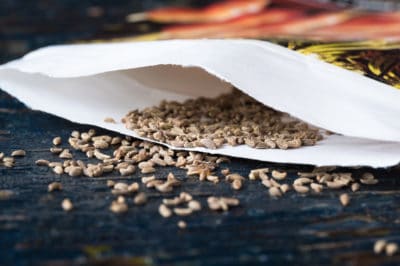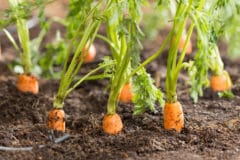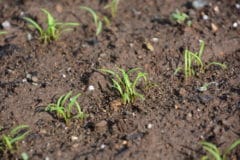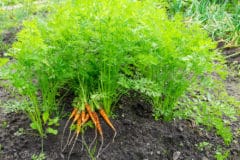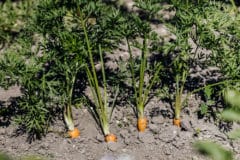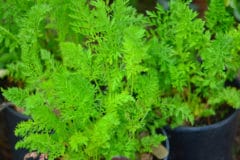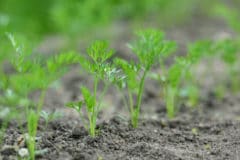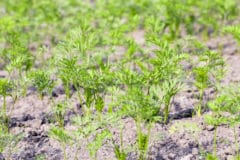Prepare for Success
Locate a sunny spot to place your carrot patch. While carrots can tolerate some shade, they do better with more sunshine. A spot with full sun is ideal, but a little shade is alright.
The soil you’ll be planting in should be loose and sandy. Carrots need soil that is easy to push through. Earth that is compacted or thick is not conducive to growing carrots. Remove any rocks from your carrot garden, too; they can interfere with the plant’s ability to grow properly.
For best results, till your garden soil to a depth of eight inches or more. If the earth you’ve tilled is thick and heavy, work in some sand and a little organic compost. Do not use manure at this time; manure causes root forking and poor harvest.
Time to Plant the Seeds
When the last spring frost is still three to five weeks away, it’s time to get those seeds in the ground!
- Growing carrots from seed is not difficult; just a little effort will bring a big harvest! Heres all the information you need to grow great carrots from seed.
- Plant in rows, an inch apart and about ¼ inch below the soil’s surface.
- When all rows have been seeded and covered over, gently water again.
- Keep the seeds damp throughout the germination process. Constant moisture is vital to growth.
- Be patient; carrots take time to germinate. It could be up to four weeks before you see growth.
Thin, Fertilize, and Water Some More
When your carrot seedlings are about four inches tall, it’s time to thin them out. Remove the smallest seedlings, or those that are very close together; you want your plants about a thumb’s width apart. In a month, thin again, so that you end up with plants about two inches apart. This is important; carrots need room to grow.
After the second thinning, start regular feeding. An organic plant food, compost mixture, or any other low-nitrogen preparation is fine. Feed carrots every two to three weeks, and water regularly; carrots need to stay moist.
Depending on the variety of carrot, you can begin harvesting between 50 to 75 days after planting. Generally, when the shoulder of the plant is ½ to ¾ inches wide, it’s ready to be pulled and enjoyed.
